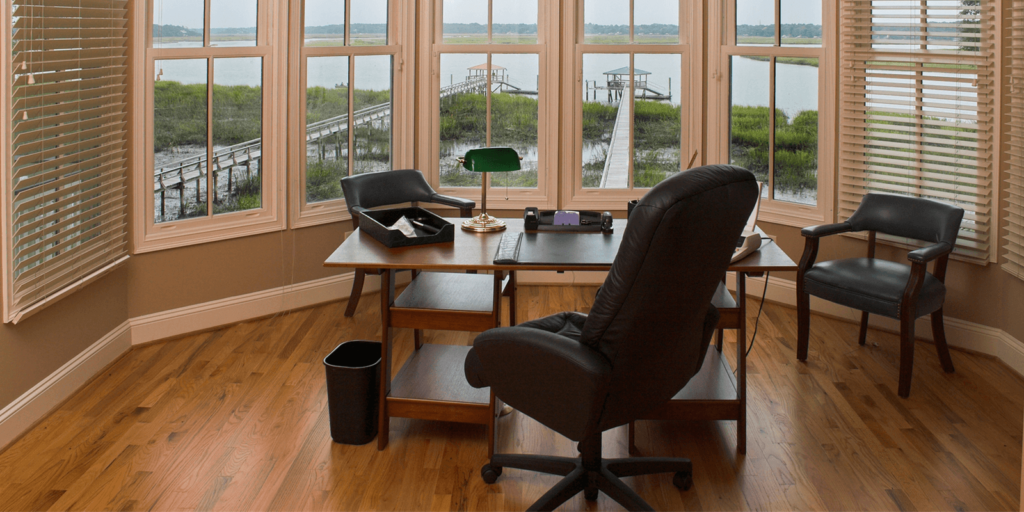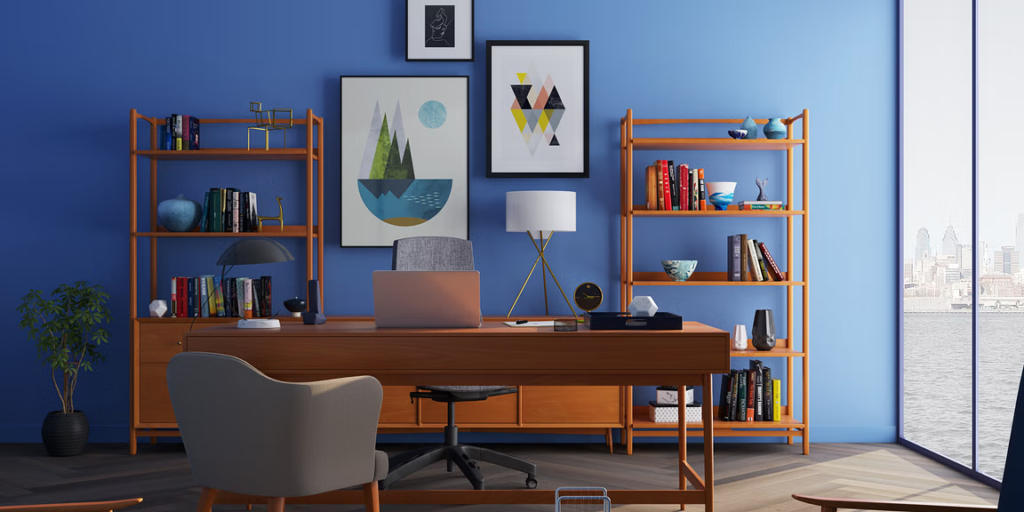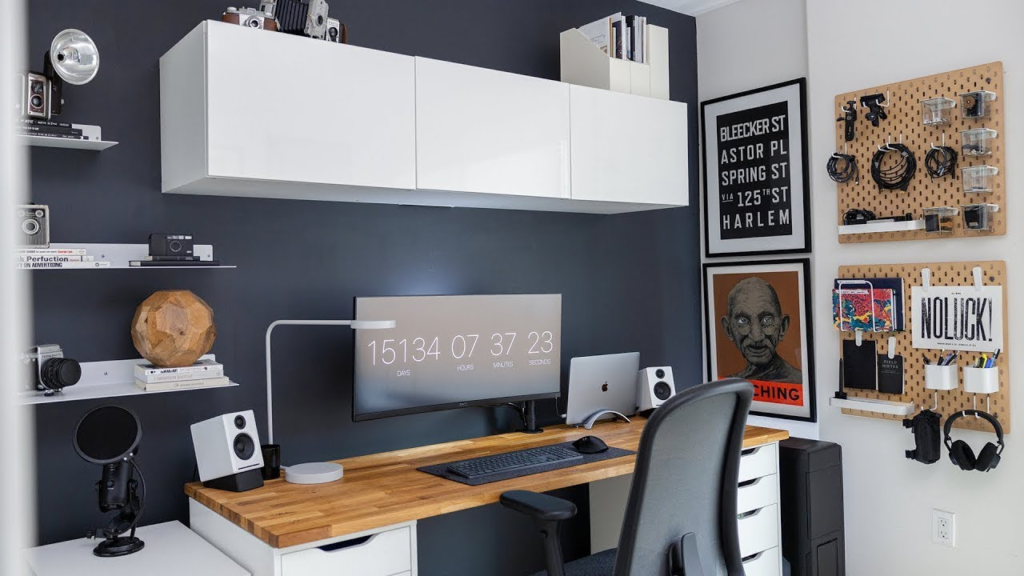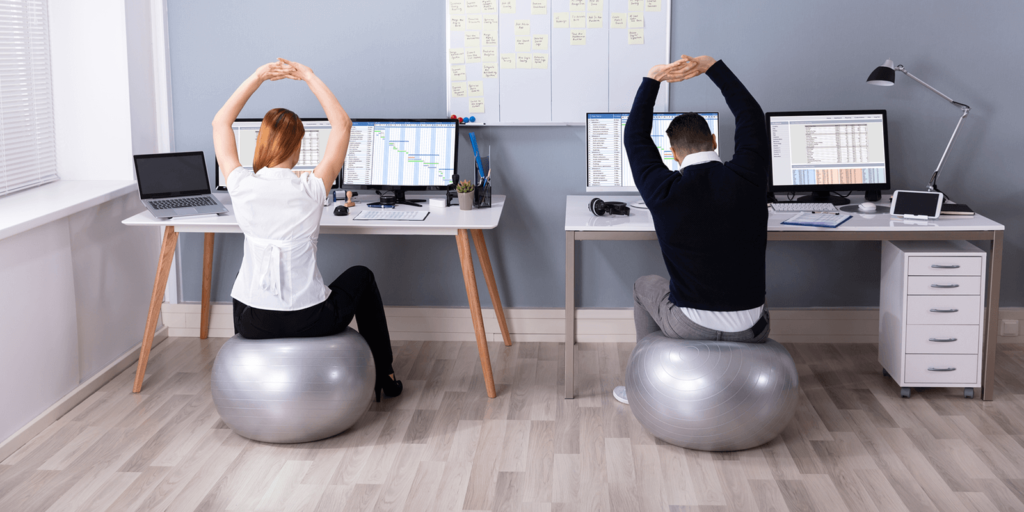Working from home has become more common than ever, and creating a home office that promotes productivity and comfort is essential for maintaining a healthy work-life balance. A well-designed home office can help you stay focused, organized, and motivated throughout the day. In this article, we will provide you with a comprehensive guide to home office design ideas that will enhance your workspace and make it an enjoyable place to work.
Setting Up Your Home Office Space

1.1 Choose the Right Location
Select a quiet and secluded area in your home for your office. Avoid high-traffic or noisy areas to minimize distractions. A spare room, a corner of the living room, or even a closet can be transformed into a functional workspace.
1.2 Natural Lighting
Position your desk near a window to take advantage of natural light. Natural light not only boosts your mood but also reduces eye strain. If natural light is limited, invest in good quality artificial lighting to ensure your workspace is well-lit.
1.3 Ergonomic Furniture
Invest in an ergonomic chair and desk. An ergonomic setup ensures proper posture and reduces the risk of discomfort or injury. Your chair should provide lumbar support, and your desk should be at a comfortable height for typing and writing.
1.4 Declutter Your Space
A cluttered workspace can lead to distractions and decreased productivity. Keep your office organized by using storage solutions such as shelves, cabinets, or drawers. Ensure that only essential items are on your desk to maintain a clean and focused environment.
Designing for Productivity

2.1 Choose the Right Color Scheme
Select calming and inspiring colors for your home office. Colors like blues, greens, and neutrals promote focus and creativity. Avoid overly bright or distracting colors that may hinder concentration.
2.2 Personalize Your Workspace
Decorate your office with items that motivate you, such as inspirational quotes, artwork, or personal photos. A personalized workspace can boost your mood and make you feel more connected to your work.
2.3 Create a Dedicated Work Zone
Separate your work area from your personal life by creating distinct zones within your home. This will help you mentally switch between work and leisure. Consider using room dividers or curtains to define your workspace.
2.4 Soundproofing
If your home is noisy, consider soundproofing your office to minimize distractions. You can use sound-absorbing materials like rugs, curtains, or acoustic panels to reduce unwanted noise.
Enhancing Comfort

3.1 Invest in Quality Technology
Ensure that you have reliable and up-to-date technology in your home office. This includes a fast internet connection, a comfortable keyboard and mouse, and a high-resolution monitor. High-quality technology can improve efficiency and reduce frustration.
3.2 Comfortable Flooring
Choose comfortable flooring options like carpet or a soft area rug under your desk. This will make it more pleasant to walk on and help reduce noise in the room.
3.3 Greenery and Plants
Introduce indoor plants into your workspace to improve air quality and add a touch of nature. Plants can also have a calming effect, enhancing your overall comfort.
3.4 Temperature Control
Maintain a comfortable temperature in your home office by using heating or cooling solutions as needed. A comfortable room temperature is crucial for productivity and concentration.
Organizing and Efficiency

4.1 Cable Management
Keep your cables organized and out of sight. Use cable organizers or clips to prevent clutter and tangling. This will also make it easier to clean and maintain your workspace.
4.2 Personalized Storage Solutions
Customize your storage options to suit your needs. Consider file cabinets, shelves, or storage bins to keep your documents and supplies organized and easily accessible.
4.3 Digital Organization
Utilize digital tools and software for task management, note-taking, and document storage. Organizing your digital workspace can be just as important as physical organization.
4.4 Daily Routine
Establish a daily routine that includes breaks and regular working hours. A well-structured routine can boost productivity and help you maintain a work-life balance.
Maintaining Health and Well-being

5.1 Ergonomic Accessories
Invest in ergonomic accessories such as a monitor stand, keyboard tray, or footrest to further improve your comfort and posture.
5.2 Regular Exercise
Incorporate short stretches and exercises into your daily routine to prevent stiffness and promote circulation. Regular movement is crucial for your physical well-being.
5.3 Break Areas
Designate a separate area for breaks within your workspace. A comfortable chair or a cozy nook can provide a peaceful spot to recharge during the workday.
5.4 Personal Well-being
Prioritize self-care and mental health. Take time to relax, meditate, or practice mindfulness in your home office to reduce stress and maintain a positive mindset.






